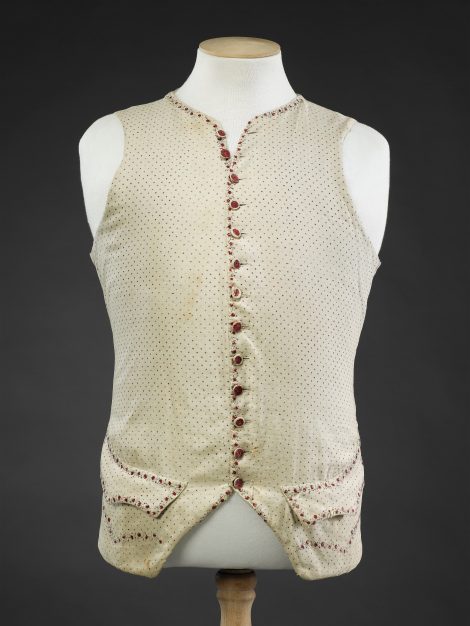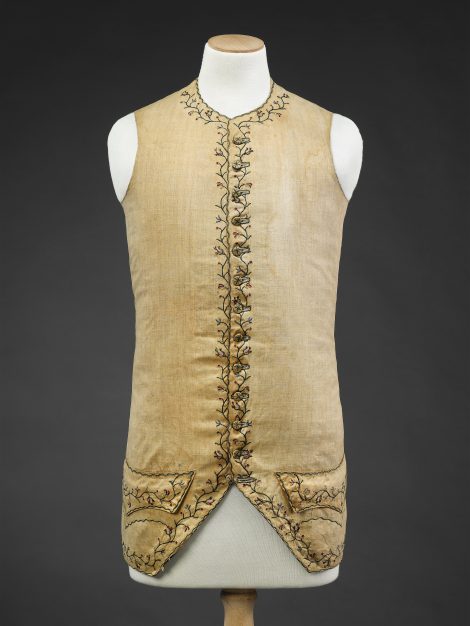Although many 18th Century waistcoats worn by the affluent on formal occasions were magnificently decorated with metallic braids, extensive areas of embroidery, or were made from rich, expensive silks, most were far more restrained, especially as the century progressed. They could be trimmed to match the coat of a suit, or were unrelated to it – appropriate for wear with a number of garments. This trimming tended to be focused upon, or limited to, the borders of the front fastening, the hem and the pocket flaps, and was ready-worked onto the shapes of the waistcoat fronts, together with button roundels, marked out on a length of fabric. Purchased from a mercer, the customer took this length to his tailor to be made up to his measurements. As coats were generally not removed in public, the unseen waistcoat backs were of plainer, less expensive materials such as linen.
This waistcoat, and those seen as Related Items, represent some of the different forms of decoration employed. All date from the 1770s to 1780s, and in comparison to earlier examples have become shorter and cut away diagonally at the base of the front fastening. Made of cotton, it would have been the least expensive of the three. It is printed to shape with a simple two-colour design. Tiny star-like motifs cover the ground, the borders a very unsophisticated small floral pattern. The border has been turned under at the hem, so is no longer visible, and has been placed low beneath the pocket flaps, marks of its standardised production, the pre-printed pieces being too long for its wearer. Waistcoats printed to shape were often the work of handkerchief printers who were familiar with separate border and ground designs.
The waistcoat has its original linen lining at the front, but the whole of the back has been replaced at a later date.




